John Hurrell – 27 February, 2019
It is hard to say in both cases what is convenient style and what is psychologically ‘genuine'-what is an appropriated visual ethos, and what has emerged from their inner core (or artistic souls); if you believe such things exist.
Trust is a really nice name for an exhibition. It sets out clearly the nature of a relationship between a loving ‘artist couple’ (Burton showed last year at Ivan Anthony and Sadikeen was included in Dirt Future at Artspace) and it also acknowledges the considerable sacrifices art consumers make, as well as art producers.
The differences between the two artists are very apparent. They work well together as foils.
Rea Burton’s paintings and drawings reveal a ‘Punk Fauve’ (‘Grunge Nabi?’) sensibility, featuring Expressionist colour (not the distortion) where chroma and figurative narratives dominate. They are vaguely reminiscent of Mimmo Paladino, and with less modelled plasticity than in the Anthony show, looser, flatter and more fluid—avoiding Paladino’s trademark stiff verticalities. Plus there are ‘sentimental’ elements thrown in, reminiscent of early Picasso.
These are all mixed with a few provocative images of self laceration, urination, menstrual blood, squirting breast milk and strivingly ‘naughty’ demeanour. With a calculatedly ragged presentation that avoids finesse, the small works are energetically impulsive yet interesting. They are knowingly mischievious and seem to have been made very quickly.
Shiraz Sadikeen’s works exude a different mood, being more overtly meditative and architectonic. Sadikeen is known as an accomplished writer, but here he makes rectangular wall reliefs out of card and paper, sometimes incorporating thin books. These projecting aggregations feature compressed layers of laminated doodle drawings, and collages involving very small, printed, bean-shaped computer drawings—obsessively mass produced, cut out and lined up in glued-on rows. Parts seem like faux Outsider Art.
His works are finely detailed, blending a raw and casual off-handedness with super fastidious precision. Because of their glued layering and delicate intricacy (in the cutting out process) they are labour intensive. These geometric, architectural constructions seem driven by compulsion. Only the occasional scribbled line is coloured.
Sometimes they feature transparent glass on which more layered card has been added. As abstract wall sculptures they blend spontaneous gesture with curtailed geometry.
Sadikeen occasionally also does interesting looping drawings of faces where the pencil never leaves the surface of the paper so that the line looks like dropped string. His line has affinities with the Art Brut artist Francis Palanc, who was obsessed with letter forms, but meandering and wobbly instead of hard, straight, jack-knifing linearities—which is more Sadikeen’s cut cardboard, with its protruding edges and overlapping fragments.
In this show Burton and Sadikeen also butt their different styled drawings together in a horizontal line on the wall, approximately alternating pages (or blending) to make a collective statement, as well as presenting larger works in isolation. It is hard to say in both cases what is convenient style and what is psychologically ‘genuine’—what is an appropriated visual ethos, and what has emerged from their inner core (or artistic souls); if you believe such things exist. Their personas differ, yet march to the same beat as interesting but manipulated, intriguing contrivances.
John Hurrell
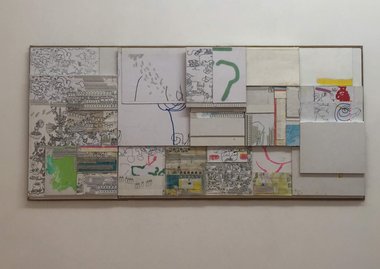
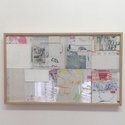
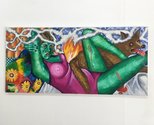
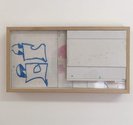


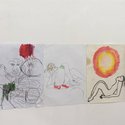













 Advertising in this column
Advertising in this column Two Rooms presents a program of residencies and projects
Two Rooms presents a program of residencies and projects



This Discussion has 0 comments.
Comment
Participate
Register to Participate.
Sign in
Sign in to an existing account.